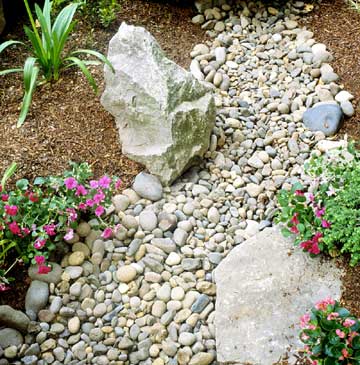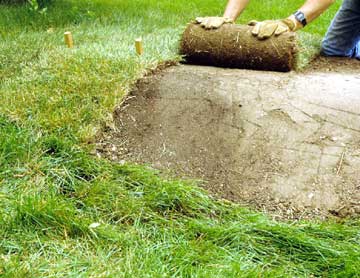






Trying to get yourself a bargain on the plants, soil, wood, and rocks you need to build up your outdoor living area means making sense of the huge variations in prices among sources and regions. As if that's not challenging enough, prices for many materials -- such as lumber -- fluctuate quickly and seasonally. Here are some tips to keep in mind as you shop for your yard.
Find inspiration for landscaping a new site.
Plan before you buy. Sketch your landscape design on paper before you start planting and building. Knowing exactly what you need and where you're going to put it helps avoid wasting money.
Decide how much design you want. Although it's less expensive to build a square patio or deck, it's no bargain if you find the result so unappealing that you don't use it. It may be worth it to pay a designer to create a space that you can really use.
Talk to a pro. You may not need to hire a landscape architect or designer to develop your whole project, but $50-$100 for an hour-long consultation is well worth the money if it saves you from costly mistakes later.
Buy in phases. Few people have the financial resources to landscape their property all at once. Divide your project into phases, and pay as you go with funds on hand. You'll save on loan or credit costs and be able to evaluate your progress and adjust plans before moving to the next phase.
Don't assume cheaper is always better. Economics of scale being what they are, home improvement warehouses typically offer the lowest prices for common plants and hardscaping materials, such as lumber. However, they may not have the selection and quality you find at more specialized sources. Also, a local specialty shop may provide more personal service, expert advice, and guarantees, which are all helpful if you're a novice. When installing a pond, for example, it may be worth it to pay more through a source that specializes in water gardens, particularly if the staff can help you choose and install equipment. Plant prices may be higher at specialty nurseries, but many offer money-back guarantees on trees, shrubs, and bedding plants.

Accept cheaper when it's good enough. With some items, there's little difference in quality between top-of-the-line and economy. Why pay more? Take advantage of a home improvement warehouse's volume buying power for bargains on common annuals and perennials, mulch, pavers, and containers. Inspect plants closely, however. A "big box" store may not care for them the way a nursery would.
Time your purchases. When you buy can be as important as where you buy. Lumber for outdoor projects is often cheaper during winter months. Save money on trees, shrubs, perennials, soil, and mulch by buying late in the season. Don't rush out to buy newly released plant varieties, which may be expensive initially because supply is low and demand is high. When production catches up in a few years, prices will likely drop.
Shop online and mail-order sources. Catalogs and web sites expand your choices, especially for rare plants and specialized products. Shopping online or by phone is convenient, and prices may be lower than in stores, but don't forget to include shipping costs when comparing prices with local sources.
Check alternate resources. Look beyond stores and catalogs for bargains. Arboretums and botanical centers often hold plant sales, and neighbors may have extra perennials to share. Some cities offer free mulch and compost, and construction and demolition sites can be sources of bricks and stones.
Be sociable. Being neighborly cuts costs. Share the rental fee for tillers, chippers, or other heavy equipment with others on the block, then take turns and save.
When buying sand, soil, rocks, mulch, and other loose landscaping materials, it can be hard to estimate how much you'll need for a project. Materials may be sold by volume (cubic feet or cubic yards) or by weight (tons). A ton (2,000 pounds) of anything may seem like a lot, but if it's a dense, compact material, such as sand or soil, a ton might not cover as much as you think -- particularly if you are spreading it to a depth of a few inches. Keep in mind that a ton of dirt, sand, or gravel will fill up less than a cubic yard (27 cubic feet; a space 3 feet long, 3 feet wide, and 3 feet deep). Here are some other helpful guidelines:
Copyright © www.100flowers.win Botanic Garden All Rights Reserved